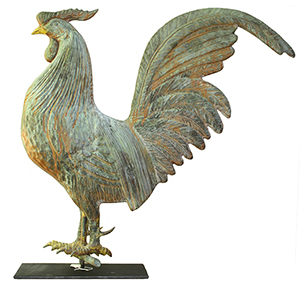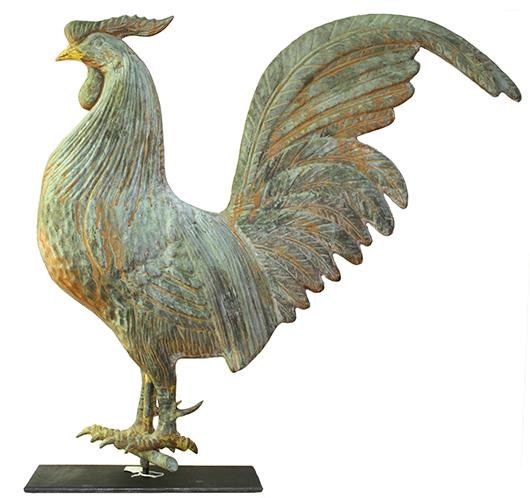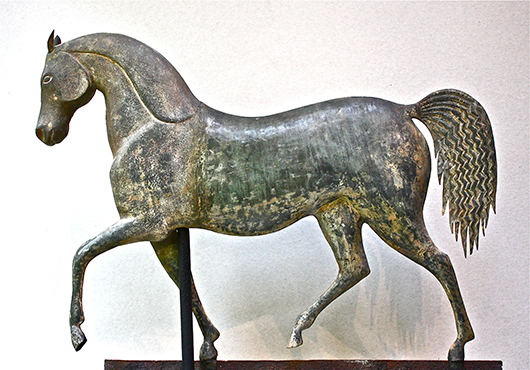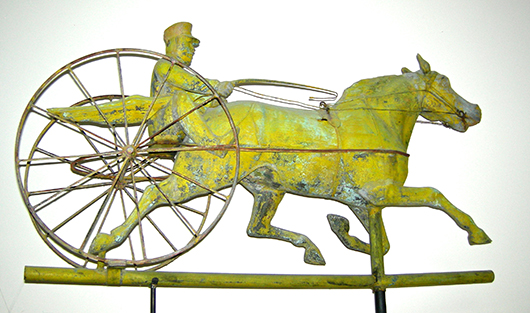
CHADDS FORD, Pa. – Brandywine River Museum is exhibiting a popular form of folk art in an exhibit titled “Which Way the Wind Blows: Antique American Weather Vanes.”
Viewed today as works of folk art, weather vanes originally functioned as useful tools for determining wind direction, particularly on farms and in maritime villages. They are also among the earliest examples of public sculpture in the United States.
Weather vane forms run the gamut through history, beginning at the Tower of the Winds in ancient Athens, where the figure of Triton—cleverly designed to always face the direction of the wind—fittingly topped the structure. Taking their cue from Old St. Peter’s Basilica in Rome, medieval builders increasingly topped church steeples with weathercocks.
In America, Colonial craftsmen fashioned unique and sometimes fanciful weather vanes by hand, such as the legendary grasshopper atop Boston’s Faneuil Hall. Later in the 19th century, a wide variety of design forms to suit every whim could be mass-produced and offered through mail-order catalogs.
The exhibition “Which Way the Wind Blows: Antique American Weather Vanes,” which includes 28 weather vanes, spotlights a selection of the forms popular in this country, including several with equestrian designs. A spectacular local weather vane on loan from the Chester County Historical Society offers a unique opportunity to consider the weather vane as an integral part of an overall architectural plan, as it originally stood atop the cupola of the Chester County Prison. Other themes highlight finer points of interest to collectors, including finishes, manufacturers and matters of authenticity. “Which Way the Wind Blows” is on view through July 28.
EXHIBITION PROGRAMS
– “Wonderful Weather Vanes” Family Workshop – Monday, June 20, 1 to 2 p.m. Action News 6 ABC meteorologist Chris Sowers will talk about weathervanes and participants will make their own wind-catching weather vanes. Free with museum admission.
– Curator’s Tour of “Which Way the Wind Blows: Antique American Weather Vanes” – Wednesday, July 10, 2 p.m. Amanda C. Burdan, assistant curator, will discuss the variety of forms popular in this country, as well as finishes, manufacturers and matters of authenticity.
For more information, please call 610-388-2700 or visit www.brandywinemuseum.org
ADDITIONAL IMAGES OF NOTE




